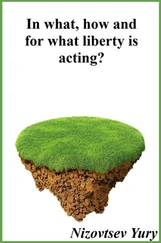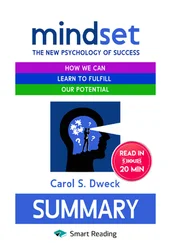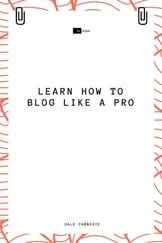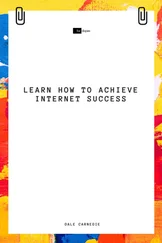Astrid Wood - How Cities Learn
Здесь есть возможность читать онлайн «Astrid Wood - How Cities Learn» — ознакомительный отрывок электронной книги совершенно бесплатно, а после прочтения отрывка купить полную версию. В некоторых случаях можно слушать аудио, скачать через торрент в формате fb2 и присутствует краткое содержание. Жанр: unrecognised, на английском языке. Описание произведения, (предисловие) а так же отзывы посетителей доступны на портале библиотеки ЛибКат.
- Название:How Cities Learn
- Автор:
- Жанр:
- Год:неизвестен
- ISBN:нет данных
- Рейтинг книги:4 / 5. Голосов: 1
-
Избранное:Добавить в избранное
- Отзывы:
-
Ваша оценка:
- 80
- 1
- 2
- 3
- 4
- 5
How Cities Learn: краткое содержание, описание и аннотация
Предлагаем к чтению аннотацию, описание, краткое содержание или предисловие (зависит от того, что написал сам автор книги «How Cities Learn»). Если вы не нашли необходимую информацию о книге — напишите в комментариях, мы постараемся отыскать её.
How Cities Learn — читать онлайн ознакомительный отрывок
Ниже представлен текст книги, разбитый по страницам. Система сохранения места последней прочитанной страницы, позволяет с удобством читать онлайн бесплатно книгу «How Cities Learn», без необходимости каждый раз заново искать на чём Вы остановились. Поставьте закладку, и сможете в любой момент перейти на страницу, на которой закончили чтение.
Интервал:
Закладка:
Previous studies have considered the Barcelona model of urban regeneration (González 2011), the Austin model of creativity (Florida 2002; McCann 2004), the Porto Alegre model of participatory budgeting (Crot 2010; Porto de Oliveira 2017), the New York City model of business improvement districts (Hoyt 2006; Ward, 2006, 2007a, 2007b, 2011), and the Vancouver model of sustainability (McCann 2008). Evidence suggests that these models are replicated because of a strong symbolic association with their place of origin that supersedes their particular achievements. The Singapore model, for instance, is not a set of concrete procedures for reproducing social housing or sustainable urbanism but a brand synonymous with efficiency and success (Hoffman 2011; Chua 2011; Ong 2011). Chua (2011) makes a case for how the urban planning innovations in Singapore are packaged and marketed as an exportable brand and while it has become a global blueprint for sustainability, it is merely a symbolic association because the achievements in Singapore are firmly rooted in the socio-political location and therefore cannot really be reproduced elsewhere. And Hoffman (2011) suggests that the use of the term sustainability has become a new criterion for ranking cities in general – those that are sustainable are more attractive, completive and viable than those without this nomenclature – a point I later make to explain the magnetism of BRT. Perhaps then models are not merely a set of guidelines to be duplicated but part of a wider approach to planning which can be inserted into complex political conditions. Those cities that implement a best practice policy model are part of a cohort of livable and sustainable cities, and those who do not are not.
Sometimes policies are only adopted after they have been reshaped to suit the needs of the importing locality. A pivotal study by González (2011) looks at how urban regeneration models travel and mutate, by considering the influence of Bilbao and Barcelona to fit the needs of a diversity of adopting localities. These cities abstract their locally developed plans and programs by building complex systems to package the model through workbooks and the requisite set of site visits needed to promote themselves as role models. Some elements of the exported model may not be suited for the importing locality, so it is adapted for its new context. Robinson (2011) concludes then that policy models are always subject to negotiation as they are circulated and practiced at the local level. Yet, relatively little is known about how these processes of mutation take place. The discussion in Chapter 3adds a critical contribution to the policy mobilities field, by revealing the way in which models mutate as they travel, at times becoming stylized versions of themselves.
Tracing the origins of a policy model reveals that adopting localities are attracted to the city-wide outcomes promised to accompany the model. Business improvement districts for example only become policy models and move elsewhere because their achievements are visible. In this case, the maintenance, promotion and security services result in cleaner, safer commercial districts, achievements easily advertised to needy property owners, developers and government actors in localities in another city. In Chapter 3, I argue that policy models move because of their association with elsewhere, which enables their reproduction in spite of different geopolitical conditions in the importing locality. My approach casts doubt on the extent to which a model can be faithfully duplicated elsewhere, and instead considers the ways in which its immaterial features encourage locally contingent policymaking, loosely based on the achievements elsewhere.
Such an approach leaves open an opportunity to think about policy models as mobile objects, packaged and produced into forms amenable to travel, and circulated by global and local actors who carry them from city to city, translating and applying them. They are imported by ambitious places eager to replicate the achievements elsewhere. In Chapter 3, I explore the agency of policy models and their role in forwarding their own circulation and adoption. How did BRT spread around the world, and why was this particular model adopted in so many cities? In answering these questions, I explore how policy packages spread not because they work but because they conform to extant power structures and established interests. Thus, a successfully transferred policy is not evidence of the superiority of any particular practice or policy, but rather indicative of the particularities of locality and its policy actors ( Chapter 4) as well as relational connections between cities ( Chapter 5).
Chapter 3 traces the global geography of BRT to understand what features attracted South African policymakers to this international best practice, and in so doing reflects on the theoretical notion of policy models and their process of mobilization, mutation and translation. Moving away from the assumption that policy models provide a technological template for best practice reproduction, this book considers the way in which the policy introduced differs from the one at its site of origin. The empirical focus reveals that Bogotá model of BRT was not duplicated in South African cities but rather a variation, which focuses on the transformation of the minibus taxi system emerged. This suggests that policy models are polysemic and rather than duplicate, they modify and mutate to suit the needs of each importing jurisdiction. The adoption of best practice therefore takes place only when aspects of the circulating notion transform and combine with underlying conditions, thereby normalizing the particular technical arrangements and social rationalities for adoption. In concluding Chapter 3, it will be evident that human actors are central in the circulation and adoption of policy models, considerations that are the subject of the next section.
Tracing through Actors and Associations
Building on the debates around traveling urban policies, I argue that people and their associations drive learning and policy mobilities. Policy actors, including both state and non-state actors as well as architects and engineers (Rapoport and Hult 2017), consultants (Wood 2019b), philanthropists (Stone 2010) and so forth, frequently look elsewhere to detect, decode and distribute best policy practices (Cook 2008; Dolowitz and Marsh 2000; McCann 2008, 2011a; Theodore and Peck 2001; Wolman 1992; Wolman and Page 2002). The background, experiences, economic, and political position of each policy actor influence their decisions. Therefore, explorations of agency and power are important in understanding the way in which global and local actors survey and circulate particular policies.
Two scholars of the operation of global consultancies provide useful groundwork for this study of BRT. Larner and Laurie (2010) investigation of traveling technocrats in New Zealand and McCann’s (2011b) study of Bing Thom, a Vancouver architect-consultant hired by Fort Worth, Texas to “Vancouverize” the city, offer insight into the central role of non-state, extra-local actors in facilitating policy mobility. Larner and Laurie illustrate the role of traveling technocrats in the movements to globalize and privatize telecommunication and water services. In their analysis of mid-level technocrats enacting privatization techniques, they note that there are a number of supplementary actors including, in their case, New Zealand telecommunications and British water engineers mobilizing transnational flows. These professionals supply knowledge and cultivate its local adoption, forming associations that advance policy mobilities. McCann underscores the ability of policy mobilizers to influence development across localities, in spite of, and because of their extraterritorial authority. McCann (2013) furthers these arguments in his study of “policy boosterism”, a concept he uses to understand how policy knowledge is mobilized around the globe. He suggests that Vancouver’s extrospection is tied to a range of global and local policymakers. These contributions highlight the way in which localities are influenced by intermediaries in the circulation of best practice.
Читать дальшеИнтервал:
Закладка:
Похожие книги на «How Cities Learn»
Представляем Вашему вниманию похожие книги на «How Cities Learn» списком для выбора. Мы отобрали схожую по названию и смыслу литературу в надежде предоставить читателям больше вариантов отыскать новые, интересные, ещё непрочитанные произведения.
Обсуждение, отзывы о книге «How Cities Learn» и просто собственные мнения читателей. Оставьте ваши комментарии, напишите, что Вы думаете о произведении, его смысле или главных героях. Укажите что конкретно понравилось, а что нет, и почему Вы так считаете.












